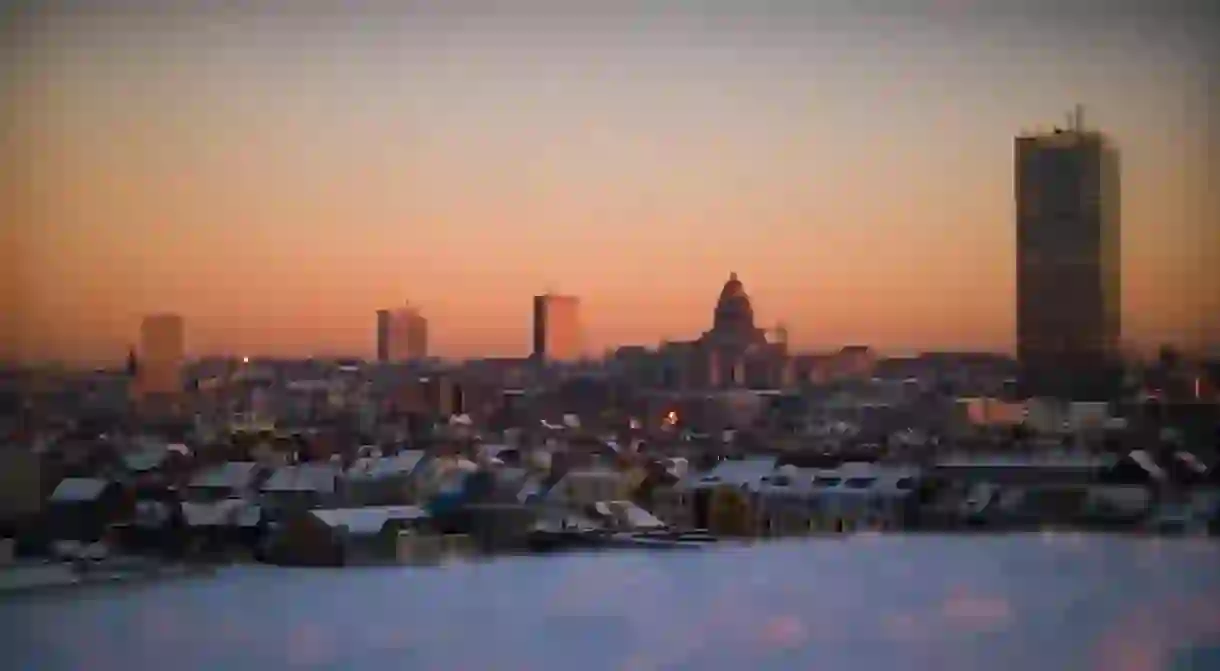The Best Art and Design Schools in Brussels

As an unexpected yet thriving contemporary art hub, the heart of Europe boasts a ton of opportunities for young creatives to hone their skills and find their voice underneath the wings of excellent mentors. Whether it’s architecture, fashion, bookbinding, or even tapestry that floats your artistic boat, together, these five art and design schools in Brussels offer it all.
LUCA School of Arts
With campuses in Brussels, Leuven, Ghent, and at Genk’s creative heartthrob C-Mine, the Dutch-language LUCA has become a sprawling art force across Flanders. In affiliation with Belgium’s top-ranking university (KU Leuven), the modern and newly reorganized LUCA organizes four- and five-year programs in a wide array of disciplines, from a tech-heavy education in film and audiovisual arts at the praised Narafi school—which incidentally calls an especially photogenic Brussels castle home—to an expansive interior architecture department.
Multiple locations in Belgium
https://www.instagram.com/p/7s7HKloYRO/?taken-at=257992
La Cambre
School

Founded by influential Art Nouveau architect Henry van de Velde in the ‘20s, La Cambre, or École nationale supérieure des arts visuels, has grown into a powerful force in visual arts and, most notably, fashion. After completing a hands-on five-year program, graduates of the fashion branch, including Nina Ricci-alumnus Olivier Theyskens, have regularly landed at some of the biggest houses and names in the industry. A nerve-racking highlight at the end of each fashion student’s academic career is the annual show at the Halles de Schaerbeek, where a professional jury and audience of about 2,000 interested parties and journalists will judge their final collection.The French-language school offers 15 other, sometimes highly specialized, art and design courses such as ceramics, art restoration, and bookbinding. La Cambre students are encouraged to go on international exchanges, take on lots of work experience in their field of choice, and broaden their horizon through extracurriculars. Its main classrooms and ateliers are situated inside the historic—and rather idyllic—La Cambre Abbey to the south of Brussels. Another noteworthy department with an innovative history is their school of animation, which originated in the first half of the ‘60s, making it one of the oldest in Europe.
RITCS School of Arts
School
As the creative and media-savvy scion of the Erasmushogeschool, the RITS was given an extra letter in 2015, when the revered school, founded in 1962, received a royal title. The college went onwards as the slightly less pronounceable RITCS, the Royal Institute for Theatre, Cinema and Sound, but kept its slew of successful alumni. Known as an incubator for directorial talent, Stijn Coninx, Erik Van Looy, and Jan Eelen are just a few of their graduates. Anyone hoping to start an education at the RITCS—be that in screenwriting, directing, drama or production—has to pass an artistic admissions exam.
Royal Conservatory of Brussels
Building, Concert Hall, School
If there’s one art school that epitomizes the international Brussels spirit, it’s the Royal Conservatory. A hodgepodge of languages and cultures, the school was initially founded after the example of Paris’s conservatory, and its building was designed in a neo-classical style echoing the Palais du Louvre. Part of the Erasmushogeschool group, musically gifted younglings come from far and wide to master instruments, song or composition under the guidance of hailed teachers. To study at the conservatory, one must pass both a musical admissions exam and a personal interview with the jury. Tip for a night out: students sometimes perform in the grand Second Empire-style concert hall for free to hone their stage skills.
Royal Academy of Fine Arts
School
Another Brussels option for artists looking to gain expertise in lesser-known fields, the French-language Royal Academy of Fine Arts offers education in lithography, screen printing, and tapestry, in addition to their architecture, painting, photography, and sculpture courses. Born in 1711 as Brussels’s first “training center” for artists, the Academy’s roots run deep. First classes took place in the famed Town Hall, with tapestry, painting and sculpture guilds teaching drawing in what are some of the city’s most sumptuous quarters. As the years went on, a royal title and a comic book strip course strengthened the school’s reputation for “Belgitude” even further. A line of influential Belgian creatives was, it seems, inevitable, and the Academy is proud to count the likes of painter René Magritte and architect Joseph Diongre amongst its alumni.













